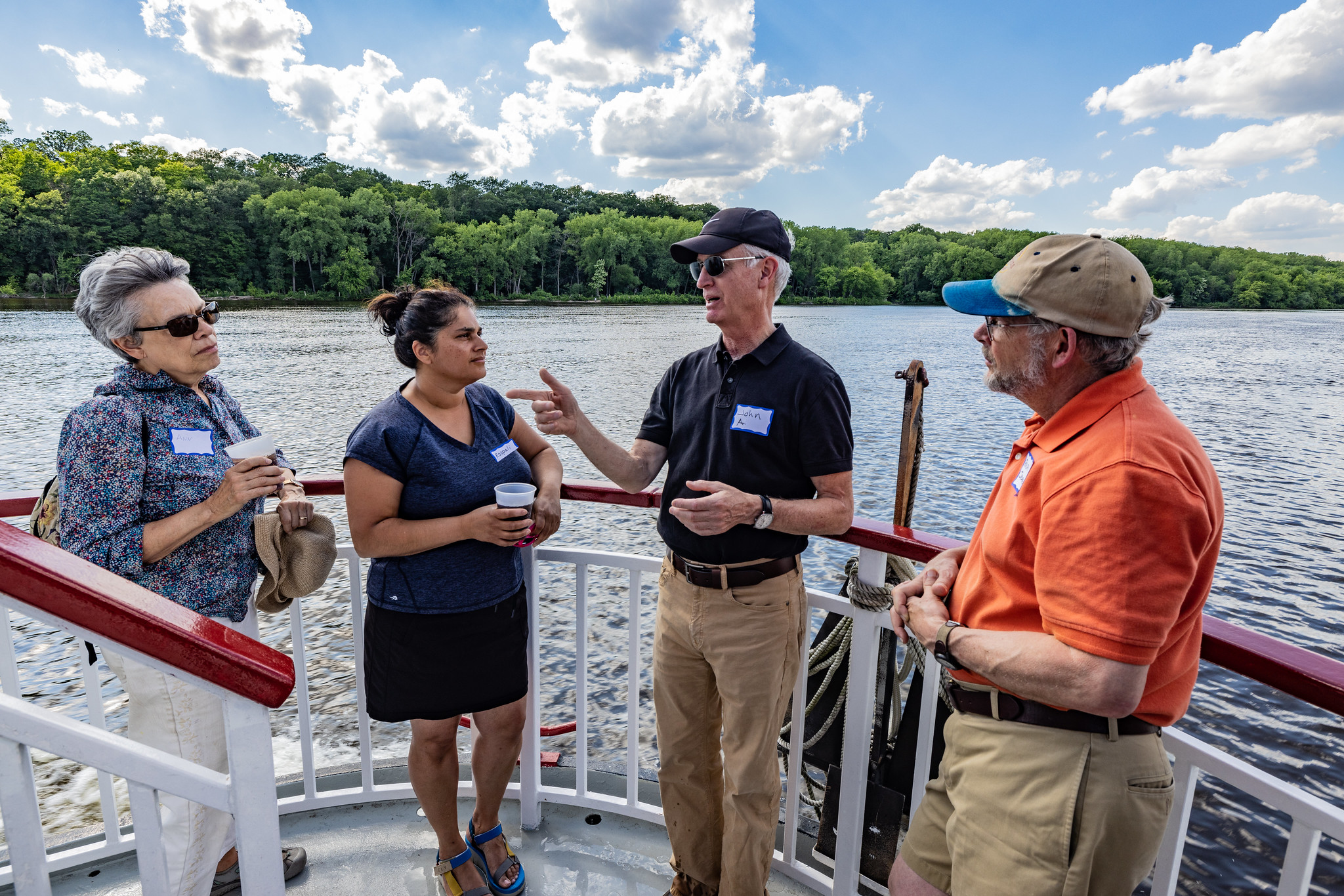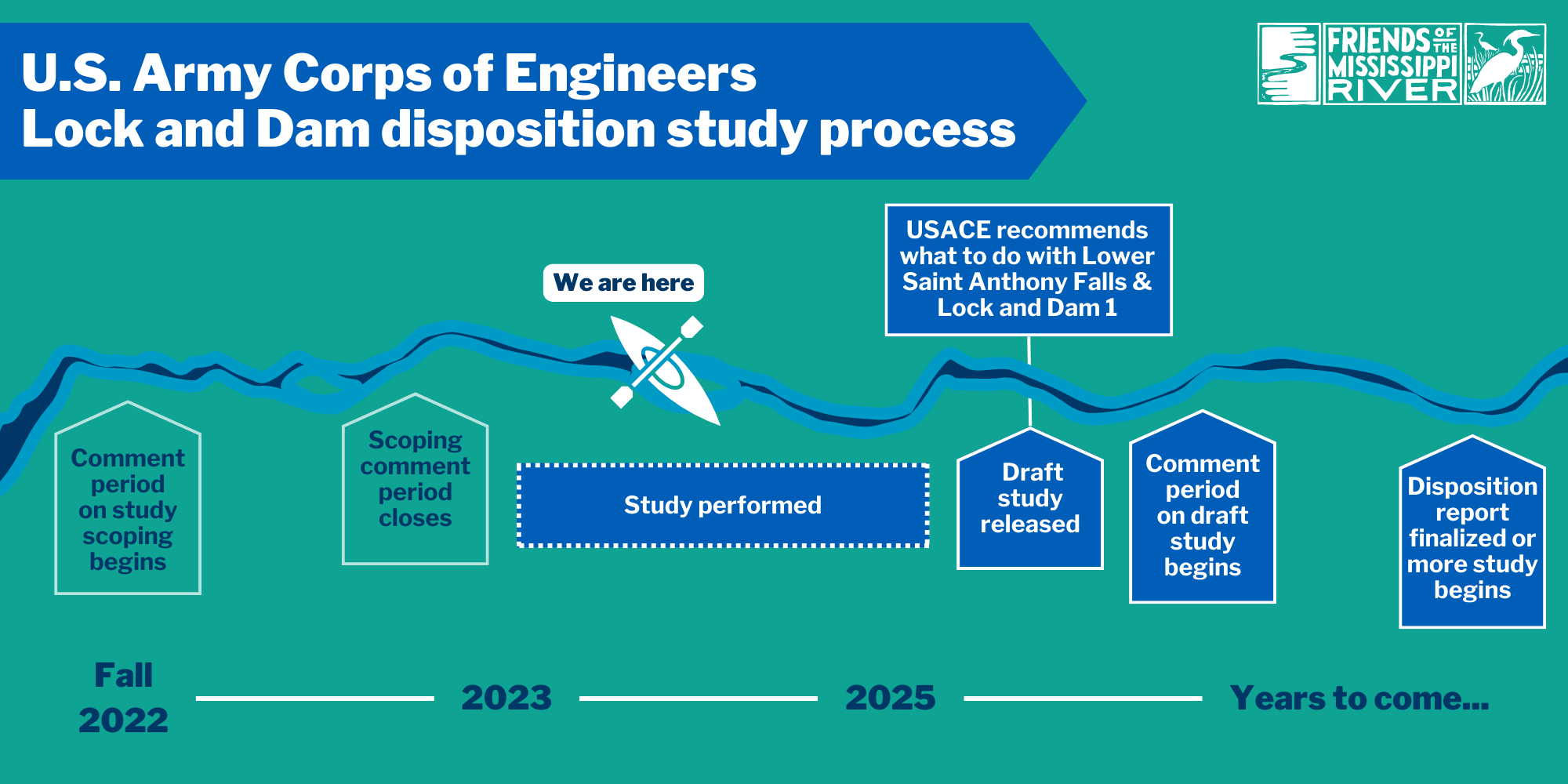How we're filling in research gaps for the lock and dam study

Should we remove two metro locks and dams on the Mississippi? Community members and researchers have important questions we'll need to answer first. (Photo by Tom Reiter for FMR)
The study that will determine the future of two metro locks and dams doesn't have the depth or funding it needs to fully investigate possibilities for the future of the Mississippi River.
This official Army Corps disposition study can't answer all the questions our community has about the right future for the river. And dam removal, in particular, isn't going to get the level of study we need.
That's partially because the Army Corps' disposition study isn't designed to go as in-depth as a dam removal feasibility study would. But in addition, the Corps has allocated only a fraction of the funding the disposition study needs to be thorough and timely. The project team requested $4 million in total for the study, but only $500,000 was provided for the first year.
At this rate, it's not clear when the disposition study will be done or how robust it will be. The Corps has pushed back its draft release date to 2025 but it's very possible the study will continue to be delayed beyond that.
Jump-starting research
That's why FMR is working with our partners to help catalyze research projects to fill in the gaps. This fall, we've been hosting gatherings of researchers, scientists and engineers to identify what questions need answering and how they can be studied. We've been organizing these convenings in partnership with the National Parks Conservation Association, American Rivers, and University of Minnesota and Macalester College faculty.
We're looking to dig into the questions that seem most important for the community and our elected leaders to have answered before we can decide whether dam removal makes sense for the metro Mississippi, how much it might cost and what impacts we could anticipate.
The research questions we've identified so far include understanding where sediment would flow and settle, impacts of lower water levels on bridge piers and other structures, how lower water levels would affect surrounding geology, which plants and animals might benefit most from a restored river habitat, and how to quantify changes to river recreation and tourism.
We want to get these research projects underway now while the Corps is also working on its disposition study. There's no reason to wait. The Corps' data can inform this other research, and vice versa.
In addition to identifying what additional studies are necessary, we'll also need to fund them. FMR is working to find and secure support for these projects.
More community input needed
Of course, science and engineering alone won't tell us everything. We need more community input, too, and we particularly need an engagement process that fully supports and includes Dakota tribal leadership and other Indigenous community members. FMR is also working to bring resources to meet those needs.
We still have so much to learn about the best future for our metro Mississippi. In the years ahead, we're looking forward to continuing all of these efforts to study, engage and learn together.

We'll update our advocates on the Army Corps study's progress and let you know when there's another chance to weigh in on the future of the river.
Become a River Guardian
Sign up and we'll email you when important river issues arise. We make it quick and easy to contact decision-makers. River Guardians are also invited to special social hours and other events about legislative and metro river corridor issues.